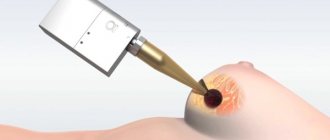One of the key blood test indicators that a doctor evaluates to determine if there are any abnormalities in a patient's health is PCT (the percentage of whole blood volume occupied by platelets). This is a criterion through which it is possible to detect not only current inflammatory processes in the body, but also to examine the general state of the human immune system.
The ability to decipher the results of the analysis, as well as an understanding of what usually causes the actual concentration of platelets in the blood to deviate from the generally accepted norm, will help to identify the onset of the disease and begin its treatment as soon as possible.
Pct - what is it, role and functions in the body
PCT (the abbreviation used to refer to the results of a platelet test) illustrates the status of the portion of the total blood volume that contains platelets. This is an indicator whose level in the analysis is most often determined in an automated way rather than by manual calculation. Its main role is to prevent the progression of dangerous diseases.
The most common among them are:
- thrombosis;
- stroke;
- cerebral hemorrhage;
- causeless internal bleeding.
The criterion under consideration helps to determine:
- How prone a particular person’s body is to bleeding . In cases of obvious predisposition, doctors usually prescribe corrective medications in order to minimize the existing risk.
- The degree or speed of the thrombus formation process . Based on blood clotting, we can predict how likely the patient’s body is to develop a vascular blockage that prevents free blood circulation.
Due to the objective importance of the result obtained, accurate platelet counting, provided by advanced technologies, is more popular than manual counting.
PCT in a blood test is the number of platelets per liter!
If there is insufficient or excessive number of platelets in the body, a person suffers from:
- frequent headaches, migraines;
- changes in skin color of the extremities;
- causeless bleeding (most often from the nose);
- apathy, drowsiness;
- decreased performance;
- severe itching on the fingers or toes;
- pain in the kidneys or liver;
- enlargement of the liver or spleen.
Thrombocrit in general blood test
The most accessible method of laboratory diagnosis of thrombocrit and other blood parameters is a general analysis. CCA (general clinical analysis) of blood allows us to identify disturbances in microprocesses in the body, indicating certain possible diseases. Blood, as a biological fluid, consists of plasma and a cellular part containing groups of formed elements: platelets, leukocytes, erythrocytes, etc.
Each group of blood cells is responsible for certain biochemical processes and has its own content norm in quantitative equivalent and percentage of the total blood volume. Basic parameters are assessed according to the reference values accepted in clinical hematology.
All indicators are correlated, so a comparative interpretation (an increase in some values against the background of a decrease or increase in others) gives the doctor an idea of which system of the body the failure occurred. Platelets are plate-shaped cells without a nucleus or color that are formed in the bone marrow.
The functional responsibility of platelets is to protect blood vessels from damage and ensure normal blood clotting. If a vessel is damaged (serious rupture or microtrauma), flat shaped elements move to the site of the “accident”, form a clot and stop pathological bleeding.
The complexity of the analysis lies in the organic property of blood platelets to stick together (aggregation). To prevent cells from sticking together, the laboratory uses a special automatic analyzer that continuously rotates the blood placed in it. Thrombocrit (platelet mass as a percentage) is studied in combination with other platelet indices:
- platelet count (PLT);
- distribution range (PDW);
- average volume (MPV).
Such a comprehensive study makes it possible to obtain more complete results about the behavior of platelets in the blood composition. As cells increase in size, their distribution range increases, and an increased average value may be associated with hematological diseases, intestinal inflammation, and other pathological processes. An altered platelet count indicates problems with blood clotting and a risk of blood clots. The percentage is calculated using the formula PCT = MPV* PLT.
The PCT blood test deserves increased attention in case of suspected disorders:
- infections of bacterial etiology (origin);
- secondary infectious blood disease (sepsis);
- postoperative pathological processes;
- complicated pregnancy;
- hematological pathologies.
In relation to other indicators of general analysis, thrombocrit is assessed when monitoring the treatment of meningitis, pneumonia and other diseases of inflammatory origin.
Additionally
To determine platelet indices, venous blood is taken. To obtain objective results, clinical analysis is performed on an empty stomach. Three days before the procedure, the patient is recommended to eliminate heavy fatty foods and alcoholic beverages from the diet. On the eve of the analysis, you should avoid sports training and limit general physical activity. Avoid taking medications that affect blood clotting (antiplatelet agents, coagulants and anticoagulants).
Norm of thrombocrit in women, men and children
Despite the similarity in the structure of the circulatory system in children, women and men, the generally accepted norm of thrombocrit varies depending on the age and gender of the individual patient.
In a healthy child, the quantitative value of platelets is usually equal to:
| Child's age | PCT reference value |
| From birth to 12 months | 100 – 421*109 cells per liter of blood |
| Over 12 months | 181 – 321*109 cells per liter of blood |
Children often fall, causing them to get cuts, scratches and wounds on their bodies. With a normal thrombocrit, the skin regenerates on its own in the shortest possible time. In addition, platelet cells prevent infection from entering the child’s body through the site of a violation of the integrity of the skin.

For adults, generally accepted reference values are:
| The age of an adult or the characteristics of his condition | Thrombocrit reference values |
| Men from 20 to 75 years old | 0.14 – 0.39% to 1 liter of blood |
| Women from 20 to 75 years old | 0.14 – 0.39% to 1 liter of blood |
| Women during pregnancy or menstruation | 0.07 – 0.21% to 1 liter of blood |
| Elderly people over 75 years old | 0.18 – 0.31% to 1 liter of blood |
When assessing the obtained thrombocrit results, one should take into account not only the patient’s gender and age, but also his lifestyle, as well as factors that have a potential impact on this indicator.
Factors influencing the indicator
As with other blood tests, a thrombocrit test may give a distorted result due to the presence of circumstances that influence a temporary change in blood composition.
Among them:
- time of day when biological material is submitted (in the evening, the platelet count may decrease by 5-7% or be at the lower limit of normal);
- seasonal period (in spring and autumn, due to internal physiological changes in the body, the thrombocrit indicator may differ from its normal value);
- menstruation period, during which a woman donates blood (at the beginning of the cycle, the PCT indicator usually decreases significantly by 20 - 40%);

- pregnancy (during gestation, the female body activates all its protective functions, in particular, thins the blood to prevent blood clots);
- excessive physical activity (if biological material is taken after sports, especially cardio exercise, the resulting thrombocrit may be 2 or more times greater than the reference value).
Proper organization of a blood test will allow you to obtain a reliable result, identify abnormalities (if any) and promptly begin treatment of pathological processes that pose a danger to human health.
Reasons for low pct
A doctor may necessarily prescribe a patient to donate blood for pct in the following cases:
- when diagnosing sepsis in order to clarify the severity of the ongoing process;
- in case of suspected bacterial or viral infections that lead to the general serious condition of the patient;
- febrile state of unknown origin;
- in case of infectious complications during organ transplantation;
- when connecting a patient to a ventilator;
- to understand what treatment to prescribe if the patient is immunosuppressed.
To take a thrombocrit test, both an adult and a child must follow the following rules:
- It is advisable to donate blood on an empty stomach before 9 am;
- Before taking the test, do not drink alcoholic beverages the day before, do not eat fatty, salty, or spicy foods;
- it is advisable not to smoke before the analysis, because this action may cause changes in thrombocrit;
- It would be best not to take any medications the day before OAC, but if you still need to take them, you should definitely notify your doctor;
- Women need to correlate their menstrual cycle with the test.
If the results of the analysis show that the thrombocrit is low, then you should not immediately try to prescribe treatment for yourself - this should be done by a qualified specialist, taking into account all the possible causes of this phenomenon.
READ What is a hemostasiogram?
Video:
A condition in which a person has a persistently low thrombocrit is observed in approximately two percent of the world's population and most often refers to chronic blood diseases characterized by low coagulation.
A platelet level below normal values indicates that few platelets are synthesized in bone tissue, and they are quickly destroyed.
The reasons that a person has a low thrombocrit may be the following pathologies:
- anemia of various kinds, both megaloblastic and aplastic;
- autoimmune diseases (lupus erythematosus). In this case, the immune system, for some reason, marks platelets as cells harmful to the body and destroys them;
- disruption of bone marrow production of platelets;
- insufficient amounts of folic acid and vitamin B12 in the diet;
- oncological blood diseases;
- liver hemangioma;
- taking medications that thin the blood for a long time;
- poisoning of the body with various kinds of toxins, both when working in hazardous industries, and as a result of radiation or chemotherapy;
- state of chronic renal failure;
- liver cirrhosis and viral hepatitis;
- allergic diseases;
- damage to the body by worms.
If a child had a low weight at birth (less than 2.5 kg) and had breathing problems, then the thrombocrit in this case is often below normal.
Children may demonstrate low thrombocrit if they take a course of antibacterial and diuretic drugs after suffering viral and bacterial infections.
Taking corticosteroid and cytostatic drugs can also cause a decrease in pct.
When is the test ordered?
A PCT blood test (this is a test that involves counting platelets), usually carried out as prescribed by a physician or hematologist, is considered mandatory for evaluation by a specialist.
According to the recommendations of doctors, it is necessary to take a general blood test for preventive purposes every 5 to 6 months. This will help to adjust its composition in time, without waiting for obvious deviations in health and the development of dangerous diseases.
Therapists usually prescribe this type of study when the patient complains of:
- frequent occurrence of bruises and bruises on the body that are not associated with external influences;
- periodic nosebleeds that cannot be quickly eliminated;
- irregular menstrual cycle (in this case, both the duration of the periods themselves and the number of days included in the menstrual cycle are important);
- excessive bleeding of the gums (if there are abnormalities in the composition of the blood, this occurs every time you brush your teeth, regardless of the type of hardness of the toothbrush used).
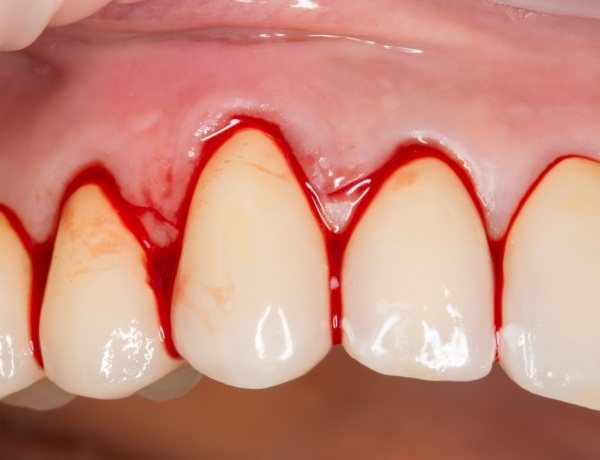
If there are no deviations in the result of the thrombocrit test, the therapist refers the patient to a specialist for subsequent identification of disturbances in the functioning of a specific body system (for example, if the gums are bleeding for no reason, the general practitioner will recommend that the person see a dentist).
Preparing for the study
PCT in a blood test (this is the number of platelets that most often occurs per liter of blood) is an indicator that can only be identified if properly prepared for the study.
On the eve of submitting biological material, you should:
- refuse to eat food and liquid (at least 8 hours must pass from the last time food and water entered the body);
- avoid stressful situations and emotional stress;
- minimize physical activity;
- get enough sleep (the optimal length of time for sleep is 8 hours);
- avoid fatty, fried, spicy foods;
- minimize the consumption of flour products and products with a high sugar content;
- make sure there is no elevated body temperature or symptoms of an incipient disease (at least a week should pass from the moment of complete recovery even from a simple ARVI).
If one of the points of the general recommendations is not followed, the resulting thrombocrit indicator will be unreliable, which may subsequently lead to incorrect treatment.
What biomaterial is taken for analysis?
To conduct a study on the volume of blood containing platelets, laboratory assistants take blood from a patient's finger.
This method of collecting biological material allows you to obtain the required amount of capillary blood quickly and without additional financial costs for medical equipment (in particular, syringes).
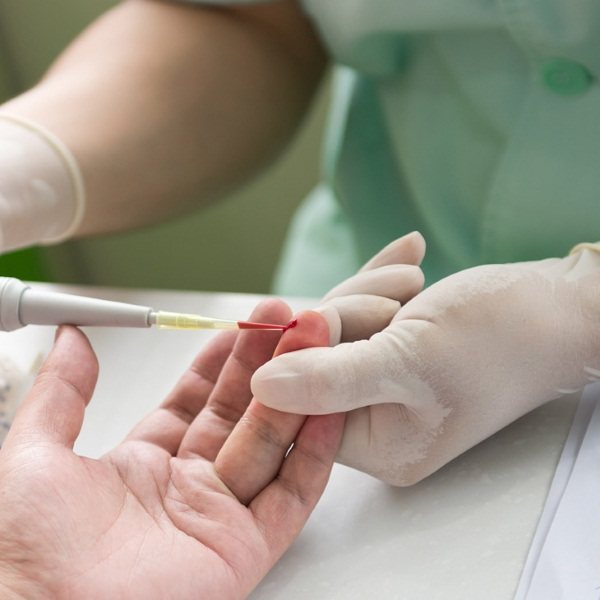
Considering that in some cases the detection of PCT is necessary in small children, a second puncture of the ring finger will allow all the necessary manipulations to be carried out without the need to restrain the resistance of the small patient for a long time.
How is the analysis carried out?
The standard sequence of actions when taking biological material for a general blood test involves the simplest steps.
Among them:
- Clean your hands before taking biological material.
- Make sure that your hands are not cold (the temperature of your fingers should not be lower than 36.6 degrees).
- Disinfect one of the fingers with alcohol or an alcohol-containing product.
- Use a scarifier (a medical instrument that resembles a blade) to make a puncture in the pad of any (usually ring) finger. The depth of the cut should be approximately 2-3 mm.
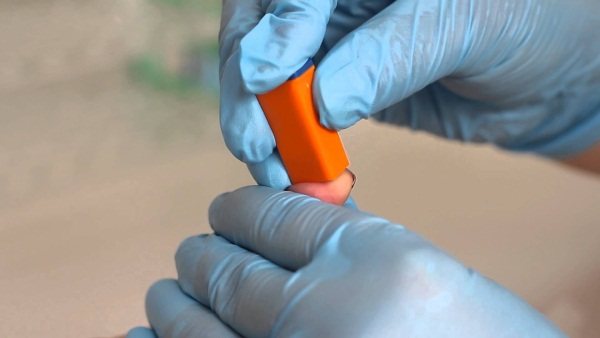
- Using light pressure on the pad of the selected finger, collect the required amount of blood with a pipette.
- One part of the obtained biological material must be placed in a sterile flask, the other - on laboratory glass.
- Apply an alcohol pad to the cut to stop the bleeding and bandage the finger.
Restoration of the integrity of the skin usually occurs within a few days after taking capillary blood. Sometimes a small hematoma forms at the puncture site, which disappears on its own without the use of medications.
Analysis transcript
PCT in a blood test is a number that can be deciphered by assessing the ratio of platelets to the amount of blood being tested. Under normal conditions in an adult, its value should fall within the range from 0.14 to 0.39.
Any deviation from the reference value, subject to compliance with the rules for preparing for the delivery of biological material, as well as conducting the study itself, is considered a sign of the presence of a pathological process in the body. A single discrepancy with the norm is usually confirmed by repeated analysis, but not earlier than a week later.
Results
The PCT indicator in the blood test form indicates thrombocrit - the percentage of platelets in the total mass of biological fluid (blood). Platelets are plate-shaped blood cells produced by the bone marrow. Their main function is to prevent bleeding when blood vessels are damaged. In addition to the percentage index, laboratory blood microscopy evaluates the platelet count (PLT), platelet distribution range (PDW) and mean volume (MPV).
The thrombocrit rate for adults and children ranges from 0.15 to 0.4%. A non-pathological decrease in values is the perinatal period and menstruation in women, as well as at night and in the spring season. An increase in the percentage, first of all, characterizes the danger of developing thrombosis, strokes and heart attacks. High PCT values accompany a number of chronic diseases.
A low platelet index indicates thrombocytopenia and insufficient platelet production, which is a clinical sign of anemia, blood cancer, autoimmune and other chronic pathologies. If the study results deviate from the norm, determining the cause of the violation and prescribing appropriate therapy is the responsibility of the attending physician.
When is additional research needed?
It is advisable to carry out additional examination in the case of the actual platelet concentration, which is significantly higher or lower than the generally accepted norm.
In addition to a repeat general blood test, the patient is recommended to do:
- ultrasound examination of a potentially unhealthy system or organ;
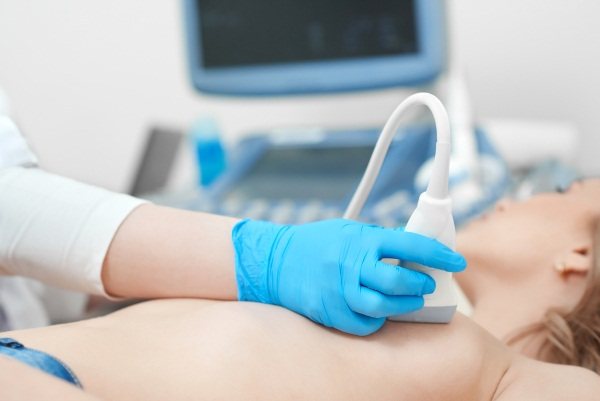
- analysis to determine serum iron levels;
- blood clotting test.
Additional health studies are also needed for people at risk. This is due to the likelihood of transmission of the blood disease at the genetic level.
Thrombocrit in general blood test
The most accessible method of laboratory diagnosis of thrombocrit and other blood parameters is a general analysis. CCA (general clinical analysis) of blood allows us to identify disturbances in microprocesses in the body, indicating certain possible diseases. Blood, as a biological fluid, consists of plasma and a cellular part containing groups of formed elements: platelets, leukocytes, erythrocytes, etc.
Each group of blood cells is responsible for certain biochemical processes and has its own content norm in quantitative equivalent and percentage of the total blood volume. Basic parameters are assessed according to the reference values accepted in clinical hematology.
All indicators are correlated, so a comparative interpretation (an increase in some values against the background of a decrease or increase in others) gives the doctor an idea of which system of the body the failure occurred. Platelets are plate-shaped cells without a nucleus or color that are formed in the bone marrow.
The functional responsibility of platelets is to protect blood vessels from damage and ensure normal blood clotting. If a vessel is damaged (serious rupture or microtrauma), flat shaped elements move to the site of the “accident”, form a clot and stop pathological bleeding.
The complexity of the analysis lies in the organic property of blood platelets to stick together (aggregation). To prevent cells from sticking together, the laboratory uses a special automatic analyzer that continuously rotates the blood placed in it. Thrombocrit (platelet mass as a percentage) is studied in combination with other platelet indices:
- platelet count (PLT);
- distribution range (PDW);
- average volume (MPV).
Such a comprehensive study makes it possible to obtain more complete results about the behavior of platelets in the blood composition. As cells increase in size, their distribution range increases, and an increased average value may be associated with hematological diseases, intestinal inflammation, and other pathological processes. An altered platelet count indicates problems with blood clotting and a risk of blood clots. The percentage is calculated using the formula PCT = MPV* PLT.
The PCT blood test deserves increased attention in case of suspected disorders:
- infections of bacterial etiology (origin);
- secondary infectious blood disease (sepsis);
- postoperative pathological processes;
- complicated pregnancy;
- hematological pathologies.
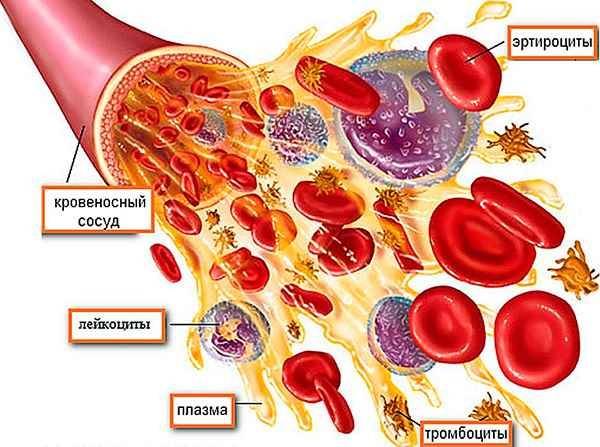
In relation to other indicators of general analysis, thrombocrit is assessed when monitoring the treatment of meningitis, pneumonia and other diseases of inflammatory origin.
Additionally
To determine platelet indices, venous blood is taken. To obtain objective results, clinical analysis is performed on an empty stomach. Three days before the procedure, the patient is recommended to eliminate heavy fatty foods and alcoholic beverages from the diet. On the eve of the analysis, you should avoid sports training and limit general physical activity. Avoid taking medications that affect blood clotting (antiplatelet agents, coagulants and anticoagulants).
Low values
An insufficient concentration of platelets per 1 liter of blood negatively affects its clotting. At low thrombocrit values, the risk of causeless bleeding (both external and internal) increases, which will be very difficult to stop.
Depending on the age and gender of the patient, hematologists and therapists differently characterize the identified indicator as low.
According to the standards:
- for women it is less than 0.14%;
- for men - similarly;
- for pregnant women or girls taking a blood test at the beginning of the cycle - below 0.06%;
- for people over 75 years old - less than 0.16%;
- for children aged from birth to 12 months – below 0.1%;
- for children older than one year – less than 0.17%.
The platelet count may decrease due to existing pathological processes or due to previously suffered diseases.
Most often, such changes in the composition of the blood are caused by:
- a tendency to develop anemia (low hemoglobin or “anemia”);
- renal failure;
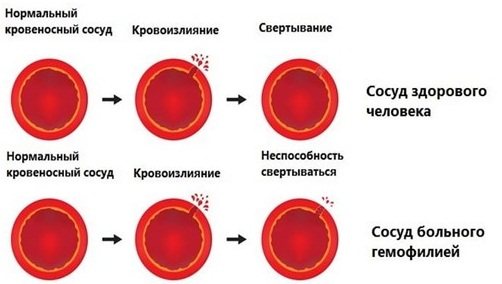
- liver problems;
- deficiency of vitamins, in particular folic acid;
- infectious or viral disease;
- lupus erythematosus disease;
- existing leukemia or hemoblastosis;
- indiscriminate use of antibacterial and diuretic drugs;
- recently completed chemotherapy;
- intoxication of the body;
- radiation damage;
- underweight;
- the presence of intestinal parasites.
It is possible to normalize thrombocrit levels only with the help of an integrated approach. The patient is usually recommended to review his diet and undergo a course of drug therapy.
In your daily menu you should focus on:
- fruits (bananas, apples, pomegranates, melons);
- vegetables;
- seaweed;
- gluten-free porridges (buckwheat, rice, corn);
- nuts (hazelnuts, walnuts);
- peas;
- beans;
- lean meat (in particular beef);
- fresh herbs;
- green tea

Among the drugs used to increase the level of platelets in the blood, the most effective are:
- "Dicinon" (a drug for the treatment of capillary bleeding);
- "Derinat" (remedy for parasites);
- "Vikasol" (medicine for hemorrhagic disease and hypovitaminosis).
After treatment, it is necessary to take a blood test again to ensure that the thrombocrit level has returned to normal.
Restoring platelet levels in the blood
You can normalize the level of platelets in the blood with a balanced diet. It is important to saturate your diet with foods high in materials and microelements. You need to give up spicy food, alcohol, fast food and sweet carbonated drinks, lead a healthy lifestyle and maintain a drinking regime.
If it is not possible to normalize the indicators using natural methods, then you need to undergo a full examination by a hematologist. If platelet levels are elevated, special medications may be prescribed - anticoagulants or antiplatelet agents. They thin the blood and minimize the risk of blood clots. But at the same time, they should be taken only as prescribed by a doctor. It should be understood that stabilization of the condition is possible only after eliminating the underlying causes that provoke deviations from the norm.
Increased values
PCT in a blood test is a value that, if exceeded, can cause blockage in the cardiovascular system. In the vast majority of cases, obstructed blood circulation leads to the death of the patient.
Depending on the age of the person, an increased thrombocrit value is:
- for middle-aged men and women – more than 0.39%;
- for people over 75 years old – over 0.31%;
- for children from birth to 12 months – more than 0.41%;
- for children over 1 year old – over 0.31%.
The reasons for the increase in this indicator may be the initial stages of serious diseases in both children and adults.
| Patient's age | Potential body dysfunctions that provoke an increase in platelet levels |
| Children (from birth to 15 years) | Pathological changes in the structure of the bone marrow and disruption of its normal functioning; initial stage of tuberculosis; iron deficiency in the body; blood loss during surgery. |
| Adults (from 16 to 75 years old) | Consequence of removal of one of the organs (usually the spleen); early stage diabetes mellitus; ulcer; gastritis; benign or malignant tumor; purulent-inflammatory processes in the skeletal system; atherosclerosis; consequence of long-term use of steroids. |
To adjust the composition of the blood, doctors recommend that patients eat as much as possible:
- fresh berries (lingonberries, cranberries, blackberries);
- white fish;
- dark chocolate.
If an elevated platelet level persists after adjusting the diet, a therapist or hematologist usually prescribes Angiox to patients. It is used to normalize the functioning of the cardiovascular and circulatory systems. Drugs containing argotroban are considered no less effective in restoring normal AST levels.
Despite the fact that the PCT indicator in the test results may not always reflect a reliable concentration of blood platelets, it is necessary to monitor its level.
This is due to the ability of such a criterion to signal existing pathological processes in the body. By normalizing the thrombocrit indicator in time, a person will be able to avoid not only subsequent drug treatment, but also, in some cases, surgical intervention.
Article design: Mila Friedan
Reasons for increased thrombocrit
When stimulating the platelet germ of hematopoiesis, as a rule, the thrombocrit also increases in the vast majority of cases. This is the body’s response to the development of a pathological process.
An indicator above normal is mainly characteristic of patients in the following situations:
- Thrombocytosis.
- Myeloid leukemia, polycythemia vera, primary thrombocythemia, thrombocytopenic purpura, chronic myeloid leukemia.
- Iron-deficiency anemia.
- Splenectomy.
- Infectious diseases of the body of various etiologies.
- Tuberculosis.
- Diabetes mellitus, especially type II.
- Hyperthyroidism.
- Nonspecific ulcerative colitis.
- Atherosclerosis.
- Osteomyelitis.
- Necrosis of tissues of any origin and location.
- Fractures of tubular bones.
- Smoking more than 20 cigarettes per day.
- Rheumatism.
- Extensive surgical interventions.
Despite the variety of reasons, when thrombocrit is elevated, the risk is primarily eliminated:
- Myocardial infarction.
- Acute thrombosis of cerebral vessels.
- Thromboembolism of the pulmonary arteries.
- Thrombosis of the veins of the lower extremities.
No less informative is its reduced levels, which also must be taken into account when diagnosing various diseases.






